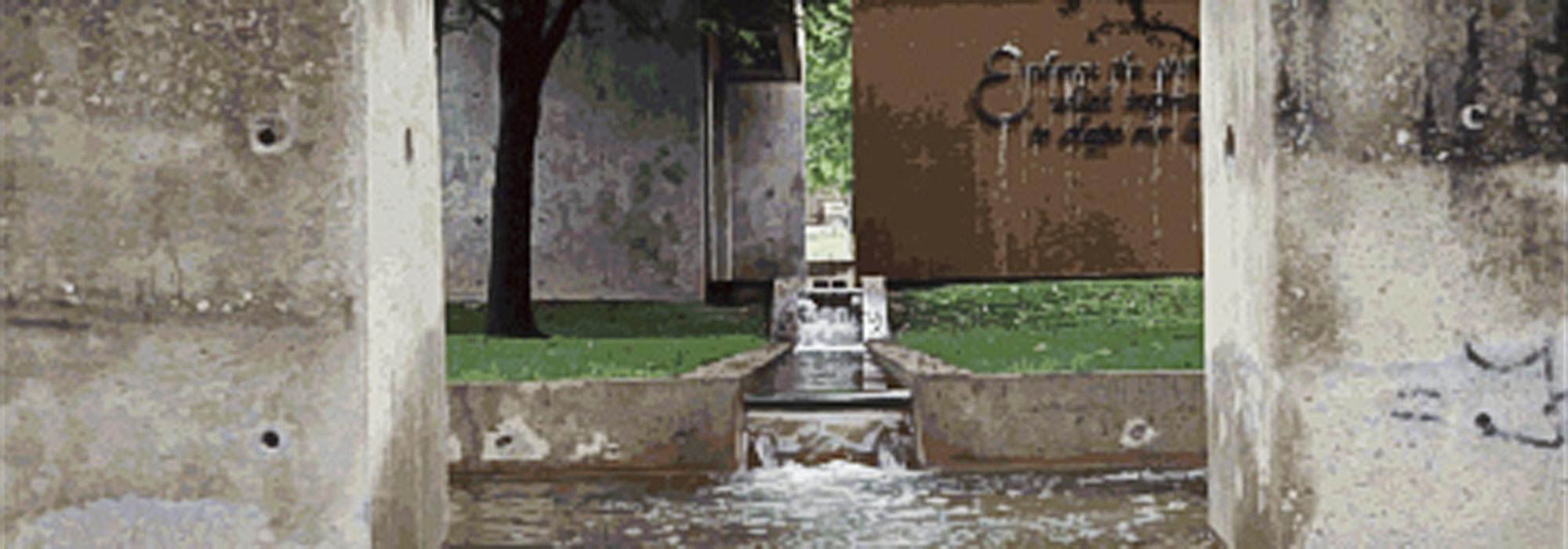It Takes One: Rachel Leibowitz
I was raised in the suburbs of Chicago during the 1970s and 1980s, the period and place represented in the teen comedies of John Hughes: Sixteen Candles, The Breakfast Club, and Ferris Bueller’s Day Off. Like those film characters, as a wiseacre teen I careened between feelings of boredom and isolation in the car-oriented suburbs and excitement and exuberance in the “big city” twenty-five miles away, accessible by train. I am fortunate to have parents who took me into Chicago quite often for concerts and museum exhibitions and baseball games at Wrigley Field. My father, particularly, is in love with the city and was constantly narrating our trips along the way, pointing out the locations of historic events, or the buildings designed by great architects, the public parks and plazas of Chicago with their sculptures and fountains. He would point out where one ethnic neighborhood would end as the next would begin, and I would always marvel at the odd ways in which the streetscapes changed. I think my father got me started on my path toward public history and historic preservation, and he also taught me that it’s impossible to be bored, even in the suburbs [gasp!], if you look around with wonder, like a tourist in your own hometown.
I went to college in St. Louis—like Chicago, a city with wonderful parks and gardens and historic neighborhoods—and majored in photography, and I was most inspired by photographers working with vernacular landscapes, like William Eggleston, Burk Uzzle, Lee Friedlander, and those in the New Topographics exhibition. Then I moved to New Orleans for four years, which was indescribable; to leave the Midwest for the South was a transformative experience for me. Again, I fell in love with city, the smell of the sweet olive trees, the sounds of the street, and I always had my camera with me. I lived across the Mississippi River from the French Quarter, and frequently I commuted by ferry, which gave me plenty of opportunities to think about vistas and movement and landscapes. But it wasn’t until I returned to Illinois to attend architecture school that I started to read about landscapes.
I took my first landscape seminar with Bob Riley, and I haven’t been the same since! He’s always asking questions, pondering, and his enthusiasm for the study of landscapes has been a great gift to me. After working in Chicago architecture firms for a few years, I returned to Urbana-Champaign in 2001 as the first student in the university’s new doctoral program in landscape architecture, and I defended my dissertation in landscape history and theory in August 2007. Since then, I have been working as a historian at the Texas Historical Commission, the state agency for historic preservation, and I love it. Texas is like several states in one: we have piney woods, blackland prairie, hill country, great plains, the Rio Grande valley, scrub desert, and vast mountain ranges. We have a rich history of agriculture and ranching, of mineral extraction, of working with the land. But there’s also a marvelous array of small-town public parks, courthouse squares, botanic gardens, swimming holes… Texas is an amazing place to study landscapes and work with communities toward their preservation.
How would you define a cultural landscape?
Broadly. I often ask, “What isn’t a cultural landscape?” Any piece of land, modified by people for any intended purpose, is a cultural landscape. It’s where natural or organic materials are willfully combined with cultural ideals and needs—shelter, sustenance, beauty, recreation, worship, trade—over time. It can be any environment imbued with meaning, and it can mean different things to different groups of people.
Why did you get involved in the landscape that was threatened in your community?
Shortly after I arrived at the Texas Historical Commission in 2007, I learned that Fort Worth’s Heritage Park, designed by Lawrence Halprin in commemoration of the U.S. Bicentennial, had been closed to the public, with the city erecting chain link fencing and shutting off the water pumps. I was frustrated by my inability to learn more about what the city had in mind for this site; in the months that followed I heard that it might be bulldozed and redeveloped, or that there were plans to drill for oil there, or that it might be remade into a new public park. As a reviewer of Federal projects under Section 106 of the National Historic Preservation Act, I saw that much of Fort Worth’s riverfront was being evaluated for proposed mixed-use redevelopment, and I felt that, despite its relative youth, Heritage Park is an exceptional public park that could be eligible for listing in the National Register of Historic Places. Then in 2008, the National Trust for Historic Preservation’s Southwest Regional Office contacted our agency and submitted materials for a formal determination of eligibility for listing Heritage Park to the National Register, and we did determine it eligible. Since then, many of our staff and our commissioners have had opportunities to tour Heritage Park with city staff and talk about our concerns and our hopes for the preservation of this park.
How did your understanding of this landscape change as a result of your advocacy efforts?
Heritage Park is astonishingly beautiful, it incorporates so many of Halprin’s theories about motion and placemaking, but I didn’t understand how different it is from his works in Portland, Seattle, and Denver. I had never heard of Heritage Park before moving to Texas; it’s not in the textbooks like Freeway Park or Lovejoy or Pettygrove. I feel as though I’ve been able to better understand the park’s beauty and its important place in Halprin’s career since its closure. And in trying to contextualize the significance of Heritage Park, I have been able to learn so much more about the astounding collection of modernist parks and plazas in Dallas and Fort Worth. In Dallas, we have Fountain Place by Dan Kiley; in Fort Worth, we also have Burnett Plaza by Peter Walker, and the Kimbell Museum grounds include George Patton’s great lawn and yaupon grove, as well as a sculpture garden by Isamu Noguchi. Personally, I find Heritage Park to be the most compelling of all.
Did the understanding of others change as well? If so, how?
Heritage Park is a component of a larger riverfront development that never was completed—an urban waterfront plan designed by Halprin in 1970. Since its opening in 1980, some Fort Worth residents have rarely used Heritage Park, and some didn’t even realize it was there. But the park’s uncertain fate inspired its secret admirers to reveal themselves in 2007, writing letters to the editors of local newspapers, starting blogs or adding photos of the park’s current condition to their websites. Historic Fort Worth, Inc., and Preservation Texas worked tirelessly to raise public awareness of this threatened park, as did TCLF and the National Trust. The city held public meetings with Laurie Olin, whose firm has been charged with restoring Heritage Park while addressing concerns for safety and accessibility. It’s been an opportunity for people to discuss their attitudes toward public space, the preservation of the recent past. The great joy is in seeing that many who once disparaged Heritage Park now see its beauty, its potential as an important component the city’s riverfront revitalization. And in September 2009, our State Board of Review unanimously approved the nomination of Heritage Park to the National Register of Historic Places, and we hope to see it listed in the coming months. That’s an enormous accomplishment for these organizations and individuals.
What is the message that you would like to give our readers that may inspire them to make a difference?
Make calls, write letters, ask questions. Contact your local preservation organizations, your statewide preservation organizations, and your state historic preservation office. If you care about a threatened public space in your community—a park, a farmstead, an orchard, a fairground—get involved. Be persistent. Tides can change.







